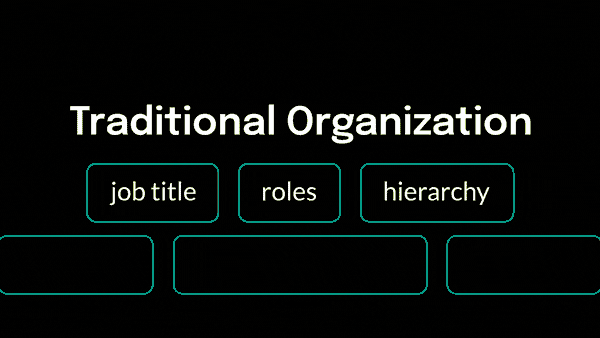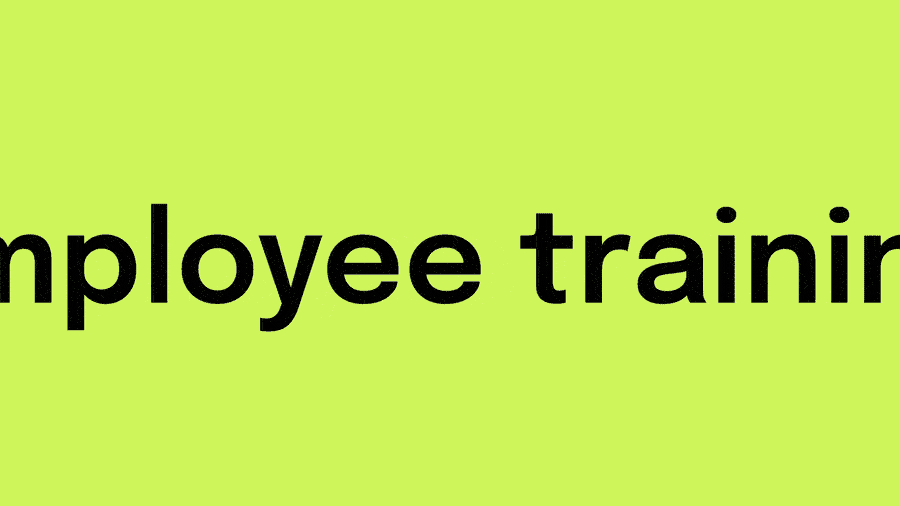

Implementing Competency-Based Training for your Frontline Workforce
Competency-based training teaches the specific skills that learners need to do their jobs. It just so happens that it's a fantastic methodology for the frontline. Here's how it can be used used to improve performance and increase retention.
What is Competency-Based Training?
Competency-based training (also known as skills-based training) - is an educational approach that focuses on developing the specific skills required for operational tasks within a job role or function.
Simply put: "Competency Based Training is training that is designed to allow a learner to demonstrate their ability to do something. "
Benefits of competency-based training for the frontline.

It just so happens that this style of training (and learning) is perfect for the frontline workforce in a number of industries, but particularly manufacturing.
Nevermind the high rate of turnover in the industry - competency - based training models allow frontline training managers to drive efficacy on the production line while closing skills gaps with laser-precision.
|
A cross-trained workforce has become increasingly necessary. Utilizing skills-based training methods allows you to be flexible at a moments notice because you have a clear picture of your team's qualifications. It also allows you to strategize how to best train and upskill your workforce for optimal flexibility.
Molly Price, Continuous Improvement Lead & Success Manager
at SwipeGuide
|
How is this different from more 'traditional' methodology?
Competency-based training practices differ from traditional training practices in several key ways.
1. Focused on skills.
These programs develop the specific skills relevant to operational tasks within a job role or function - and these can change and grow along with the needs of the organization and of the employee.
This targeted approach ensures that employees receive training that is tailored to their specific job requirements, enhancing their ability to perform their tasks effectively.
Training efforts can be coordinated with an existing employee skills profile in a skills matrix or skills management tool to fill gaps as needed.
2. Outcome-oriented.
Rather than simply imparting knowledge or information, this approach emphasizes the application and demonstration of skills. Employees are provided with opportunities to practice and showcase their competencies, allowing them to build confidence and proficiency in their roles.
Growth (and certification) is as simple as performing specific skills assessments to determine skills levels and certify capabilites. These outcomes are used for career advancement, rather than arbitrary markers like a CV or 'years of experience.'
3. Personalized and flexible.
This methodology recognizes that individuals have different learning styles and paces. Competency and skills-based training programs allow employees to progress at their own speed. Better retention
This personalized approach ensures that employees can fully grasp and apply the skills being taught, leading to more effective learning outcomes. 'Self-paced learning' has a number of distinct benefits:
- Better knowledge-retention
- Less fatigue and stress
- More productivity
- Higher engagement and completion rates.
Competency-based training also enables organizations to solve specific operational needs in a far more agile way compared to job-based or more generalized training approaches.
How does it benefit the frontline workforce?
It's always easy to frame the benefits of these methodologies from the perspective of the leadership teams. Yes, competency-based training yields better results and improves the bottom line.
But how does it make life better for the operators who actually participate in the training?
Transparency and perspective.
Teams depend on effective and clear training programs as the backbone of their personal development and learning journeys within a company. Centering these initiatives around a clear-cut set of skills and abilities gives them the opportunity to:
- Advance more quickly into roles that are actually interesting for them.
- Clearly see at a glance which areas they need to improve with skills management tools.
Competency-based learning and development helps to takes abstraction and guesswork out of skills development.
Better benefits.
Many organizations are making the transition to skills-based pay structures, adding a very real financial incentive to the benefits of competency and skills-based training programs.
These programs not only help drive the adoption of new skills - but can improve flexibility and employee retention across the board. In addition to pay-based incentives, highly-skilled employees often have access to more desirable shifts
Reasons for focusing on competency-based training.
1. Better retention and job satisfaction at the frontline.
Competency-based training enhances employee retention by providing a more engaging training experience and more opportunities for meaningful growth.
When employees have the opportunity to develop and demonstrate specific skills, they become more valuable to the organization and are more likely to stay and grow.
2. Closing the growing skills gap.
As industries evolve and new technologies emerge, there is often a disconnect between the skills required by employers and the skills possessed by the workforce.
In fact - 2.1 million manufacturing positions will go unfulfilled by 2030. The cause? A multitude of variables contributes to the frontline skills gap, but chief reasons include:
- High employee turnover
- Technological advancements
- Lack of priority on training and reskilling/upskilling
Competency-based training allows organizations to bridge this gap by providing targeted training that addresses the specific skills needed in the current job market.
3. Tailored training.
By identifying the specific skills required for operational tasks, organizations can design training programs that directly address these needs, leading to improved productivity and efficiency.
By focusing on competency-based training, organizations can create a workforce that is equipped with the skills needed to thrive in today's rapidly changing business environment.
Particularly important are initiatives to reskill and upskill the current workforce - paving the way for short and long-term skills development without hiring new employees. The benefits of investing in your existing frontline workforce?
- Better retention
- Opportunities to capture 'silent knowledge'
- More competent teams (and more effective processes)
Examples of competency (skills)-based training practices.
In the frontline industries like manufacturing, competency-based training practices are crucial for ensuring operational excellence and closing the ever-growing skills gap.
Some examples of competency-based training practices in manufacturing include:
Technical skills training.
Providing employees with hands-on training to develop technical skills required for operating machinery and equipment.
Examples:

Safety training.
Ensuring that employees are trained in safety protocols and procedures to maintain a safe working environment.
Examples:

Quality control training.
Training employees on quality control processes and techniques to ensure product quality and customer satisfaction.
Examples:

Continuous improvement training.
Equipping employees with problem-solving and process improvement skills to drive continuous improvement initiatives within the manufacturing process.
Examples:

Best practices for implementation and management.
Implementing and managing competency-based training programs requires careful planning and execution. Here are some best practices to consider:
1. Conduct a skills gap analysis. Identify the specific skills gaps within the frontline workforce and prioritize the competencies that need to be developed.
This process is greatly accelerated by the use of a digital skills matrix.
2. Define clear learning objectives. Clearly define the desired learning outcomes for each competency-based training program to ensure that employees understand what they need to achieve.
In a large organization, this can be a daunting process. We see innovative companies using generative AI to help break each process down into its individual skills.
3. Provide ongoing support and resources. Offer employees the necessary resources, such as job aids and digital tools, to support their learning and application of new skills.
Digital job aids like work instructions and SOPs can be seamlessly integrated with a skills development and training platform to deliver the right learning materials at exactly the right moment.
4. Foster a culture of continuous learning. Encourage employees to embrace a growth mindset and view learning as a continuous process. Recognize and reward employees who actively seek opportunities to develop their competencies.
These efforts will be rewarded with a more productive feedback loop and less turnover at the frontline.
5. Monitor and evaluate training effectiveness. Regularly assess the impact of competency-based training programs on employee performance and make necessary adjustments to ensure continuous improvement.
Employee skills assessments, linked to a digital skills management platform, allow supervisors to populate a skills matrix in real time.
Want more skills content?
👉 Here are the benefits of a dynamic digital skills matrix.
👉 Here's a great free template to help coordinate employee development.
👉 Here's a breakdown of reskilling vs. upskilling (and the importance of each) at the frontline.
Author
Revisions
It's time to simplify frontline training
Work instructions, checklists, and skills management - all in SwipeGuide
- Cut training time by 50%
- SOC I and II compliant

